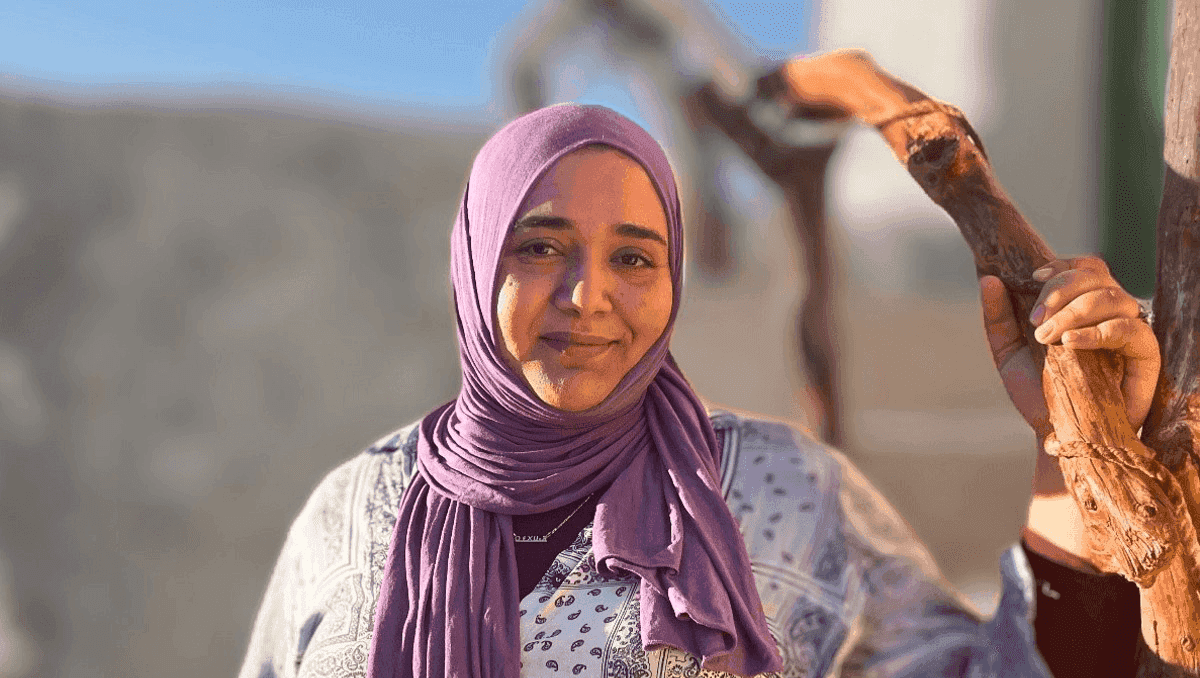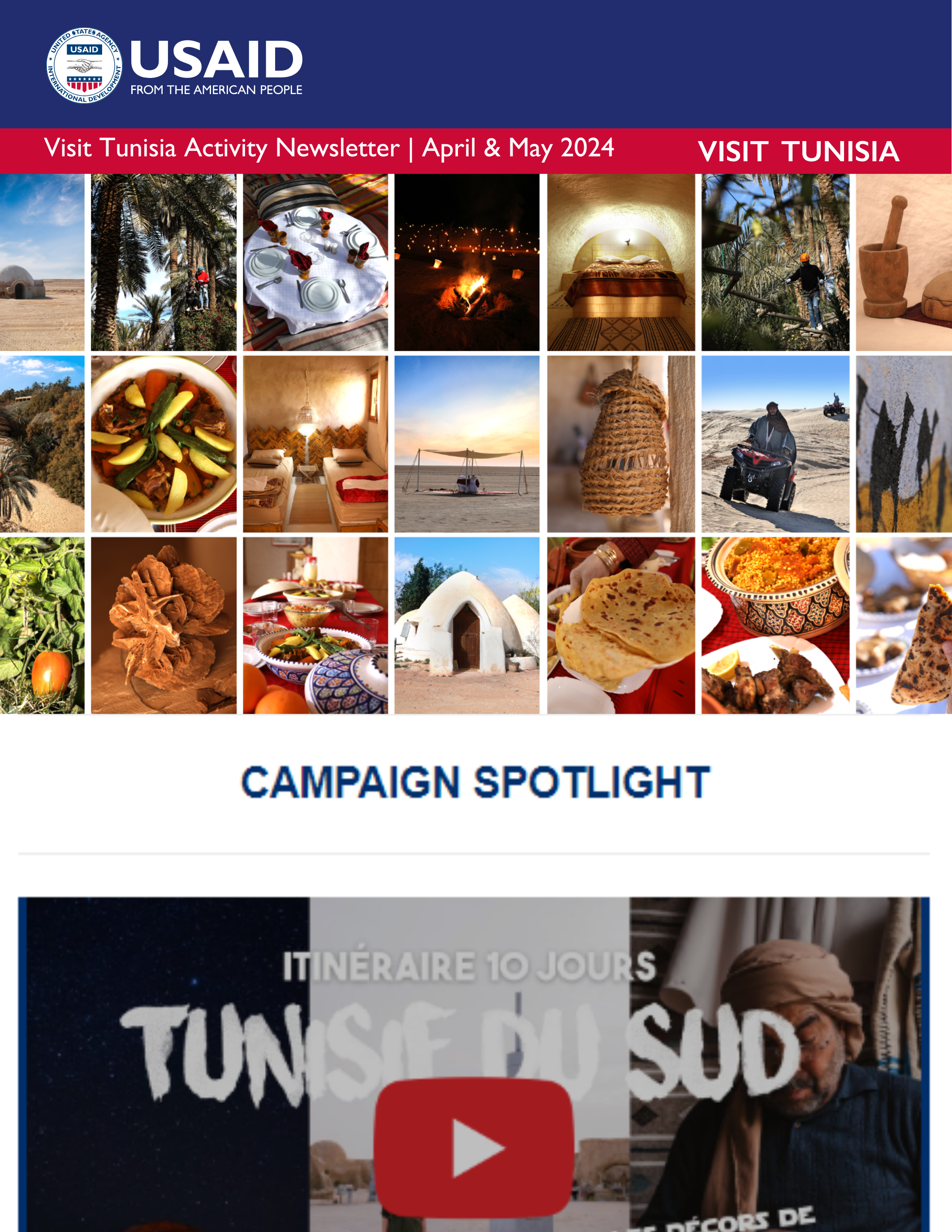As part of its Tunisia’s Living Culture (TLC) Program, USAID Visit Tunisia in partnership with the Smithsonian Center for Folklife and Cultural Heritage is providing market readiness support to 30 experiences from an initial pool of 280+ artisans and culture-bearers. 57% are women-led SMEs, and 20% are under the age of 35. TLC creates tourism experiences centered around intangible cultural heritage and helps market them in 2024. Below is a deep dive into the USAID–supported Café Ben Jemâa experience in Tamezret.
Café Ben Jemâa: a Genuine Connection with the Amazigh Culture
Kaouther Ben Jemâa is a young Amazigh woman who is behind the ‘Café ben Jemâa’s success, a 5th generation café shop overlooking Tamezret village that was restored in 1932. Cafe Ben Jemâa is known for proudly representing the authentic Amazigh heritage through storytelling, local dishes and an Amazigh language workshop designed for visitors keen to learn more about the indigenous Amazigh of North Africa. Photos ©Rim Hajri/USAID November 2023.
“I used to live and work in the capital (Tunis). I put all that behind me and moved back to my hometown (Tamezret) to dedicate myself fully to our family business. I am on a mission to share through food, stories, and connections my Amazigh culture with the world and prevent our old traditions from disappearing.” — Kaouther Ben Jemâa.
With USAID’s technical assistance and USD $3,000 grant support and marketing efforts, it is expected that in 2024, Kaouther will increase her sales by at least 10%, and online visibility by at least 20%, and create 2 full-time jobs.
USAID Visit Tunisia, through its technical and grant assistance, worked with Kaouther to enhance the market readiness of her business. This included developing the experience to increase its appeal for domestic and international visitors, better defining the experience offerings and price points, creating marketing material to expand social media presence, promoting the business through a marketing campaign and providing necessary equipment.
“I am fully committed but I can only serve a handful of people at a time. My biggest challenges are managing and providing the experience all by myself as well as ensuring the maintenance and preservation of the ancestral structure of the café. My goal is to make the tourism experience more defined, and scalable. By increasing profits, I will be able to hire more people to engage with a higher volume of visitors without the risk of compromising on the quality of the experience.” — Kaouther Ben Jemâa.
Kaouther brings an extraordinary personal touch to the experience. The implemented solutions and grant support play a crucial role in creating an engaging tourism experience and a profitable, sustainable business that continues to preserve the Amazigh heritage of Tamezret in Tunisia.
Pasta Making Workshop for a Must-Taste Amazigh Dish ‘Karabiz’
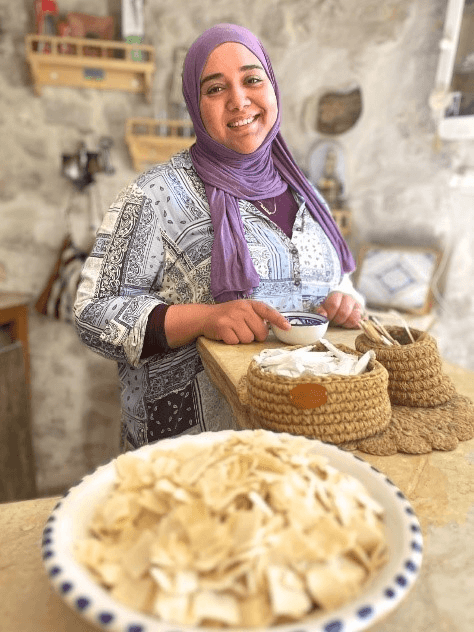

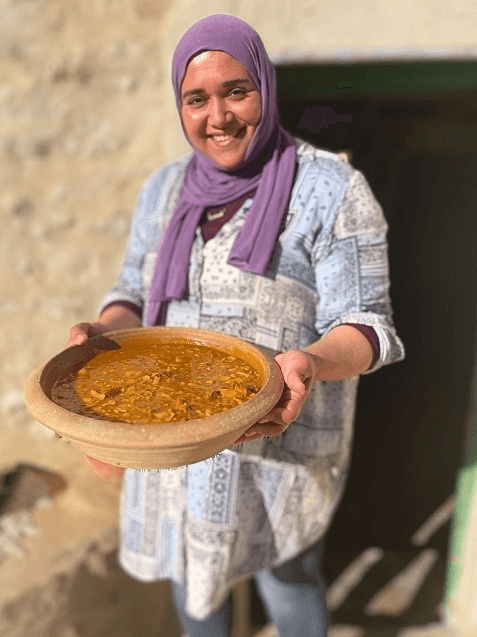
Visitors must prepare to roll up their sleeves and put their cooking skills to the test! The cooking workshop starts with making pasta at the shop. Visitors are invited to roll out the dough with a rolling pin (called ‘karbaz’ in Amazigh language), spread it out outside under the sunlight, and leave it to dry for a few minutes. The hands-on experience ends with pasta cutting to create evenly-cut cubes that will be stewed — Kaouther makes it look easier than it is.
“Our visitors love it. The karabiz is a year-round typical dish from Tamezret. It has other names in other regions such as ‘ftet’, and ‘rechta’. In the real Amazigh language, it is called ‘tikarbizi’, inspired from the rolling pin ‘karbaz’. It is all made with natural ingredients – rather than using concentrated tomatoes, we use dried tomatoes 'hrouss’ that add flavor to the dish.” — Kaouther Ben Jemâa.

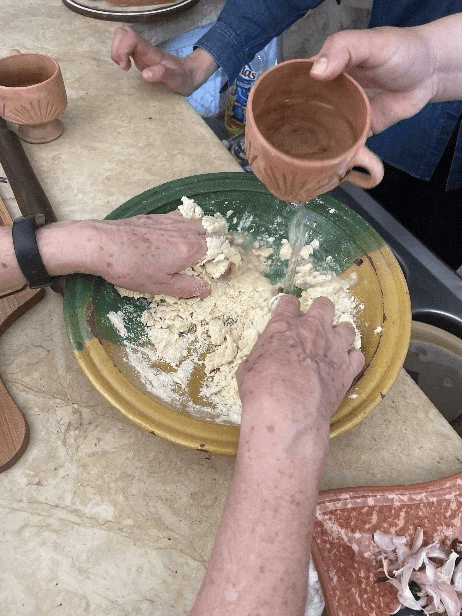

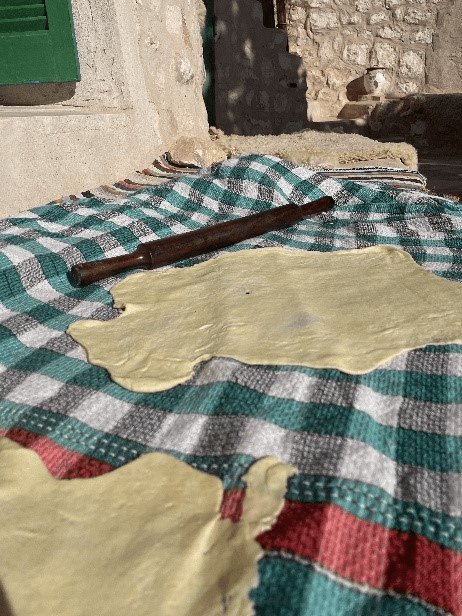

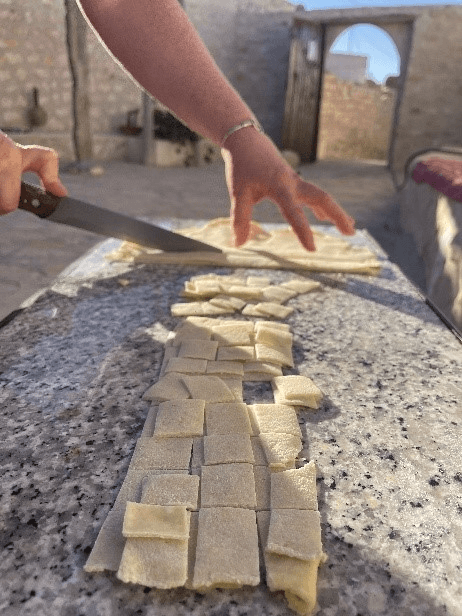
Savory Authentic Home-Made Delight ‘Garn Ghzel’ (Gazelle Horn)


Deep Dive into the Amazigh Language: Alphabet and Writing Workshop
Kaouthar brings out the Amazigh flag and unfolds it in front of her visitors, saying "This is not the flag of the Amazigh, but it is a flag symbolizing the unity of North African inhabitants." The belief has it that the flag symbolizes the nature that distinguishes North Africa: the blue color represents water, the green color represents the mountains, and the yellow color represents the desert. The pattern in the center of the flag is not just a symbol; it's a letter from the Amazigh alphabet pronounced as 'يَازْ’ (the letter ‘Z’). It symbolizes freedom. That's why most men have this letter tattooed on their hands.
After an interesting lesson on the Amazigh language, visitors attempt to write their Amazigh names — a fun moment and an opportunity to create a tangible souvenir on a piece of paper to bring back home.


Quick Roof-Top Tour Overlooking the Village of Tamezret
Before leaving, visitors ascend to the café's rooftop and enjoy the breathtaking natural scenery.
“At the top of Tamazret in a small airy courtyard is Café Ben Jemâa, a lighthouse of hospitality since1936, now overlooking the bones of its village. The laughing landlady, Kaouther, is the latest in the line of shrewd Amazigh chikha. Community differences were settled in her café. Kaouther taught me to make karabiz, a succulent stew of pasta, spices, chickpeas and sheep’s stomach.” — wrote Horatio Claire at the Financial Times’ article ‘High and dry: exploring Tunisia’s Dahar mountains’ published on November 25, 2023. (Read the full article here).

Follow Café Ben Jemâa on Instagram, and Facebook. Check the localization here.
All Photos ©Rim Hajri/USAID November 2023
